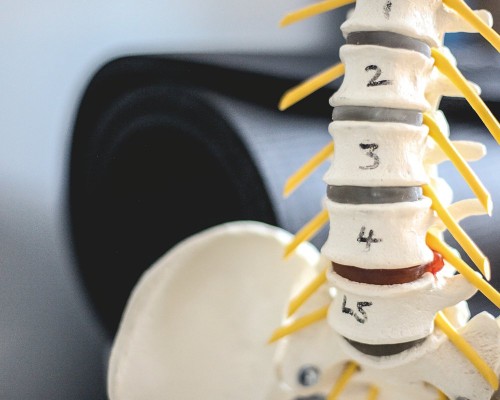10 Top Tips for a Strong, Healthy Back
Whether you have benefitted from a happy back all your life, or have experienced previous episodes of back pain, maintaining a strong and healthy back is the key to living pain-free with reduced aches and pains and increased vitality and suppleness.
What we’re really interested in at Pilates Evolved is ‘pre-habilitation’. When it comes to all ailments we believe that prevention is always better than cure and we are always keen to give you movement snippets and tips that can be easily incorporated into your daily life. That being said, here is our top 10 hit-list to keep your back strong and healthy…
1. Always try to squat down with a neutral spine when lifting heavy objects.
Keeping your spine long and hinging from your hips takes the pressure off your spine and instead dissipates the load around the strong muscles surrounding your hips to take the load for you. Squats and hip hinging moves are included in our Pilates Classes for a very good reason!

2. If you are lifting a heavy object keep it as close to your body as possible.
By simply reducing the levers involved, this is a basic trick that allows you to lift in a biomechanically efficient manner to lift.
3. To move a large or heavy item, try to push rather than pull. Get onto your hands and knees for low objects rather than bending over them.
By pushing against heavy objects, you can use your own body weight to help you.
4. Sit right – address your workstation and take the pressure off.
Sitting down puts more pressure on the discs than any other activity and can cause lower back pain complaints. Many of us spend a large portion of the day sitting down. If this sounds like you or you are desk-bound for work, make sure your workstation is as back-friendly as possible. Your chair needs to be correctly adjusted for you and the computer screen should be at the correct height so you can sit upright comfortably.

5. When carrying heavy shopping, it is better to split the load by carrying one bag in each hand to distribute the weight more evenly.
If you really want to be maintain a healthy, happy back and tend to carry a heavy handbag, consider wearing a rucksack if you are walking around all day to transfer the weight evenly across your back.
6. Avoid certain types of foods to keep inflammation at bay.
Believe it or not, inflammation of the digestive system can prolong muscular inflammation and hinder recovery. Avoiding processed foods and artificial substances is key to supporting muscle recovery. Eating a healthy, balanced diet full of natural whole foods is the best way to keep all the body’s systems well oiled.
7. When you are gardening or doing housework, avoid prolonged bending down. It is best to use your legs or kneel down to and get closer to the area you are working on.
Kneeling on cushions or foam supports can be kinder to your knees if needed. Working closer to objects allows all the muscular systems to work in a balanced fashion.
8. If your back gets tired while shaving, putting on your make up or cleaning your teeth, use one hand on the sink to help support yourself.
Prolonged standing can aggravate certain back conditions. Supporting yourself can ease aches and pains, as can walking around during certain tasks (although we realise walking around whilst shaving may be problematic!)
9. Stretch your back regularly, especially before going to bed. This will help release tightness in your back and neck … and help you to get a great night’s sleep!
Find stretches that work for you and your back. These can be prescribed by one of our corrective exercise specialists, or a physiotherapist. Taking just 10 minutes a day to keep the musculature of the back lengthened may make all the difference in keeping your back healthy.
10. Keep active!
Keeping everything moving and lubricated is so important – many back pain issues can be caused by stiffness or a lack of mobility. There are many forms of gentle, non-impact exercise that are accessible and back-pain friendly. Exercise such as walking, swimming or Pilates encourages blood to oxygenate the body, helping to keep joints lubricated and discs hydrated, which in turn will promote healing and help to prevent further symptoms.
Pilates is recommended frequently by healthcare practitioners for those with back pain, both as a preventative for a strong, healthy back and as a means of managing a current back condition. The gentle, low-impact exercises used in Clinical Pilates address the deeper muscles of the abdomen and back, to correct muscular imbalances and enhance the robust nature of your spine so you can live free of aches and pains.
If you would like to learn more about how Pilates can help you, contact our specialist team to arrange your complimentary consultation 01273 495911



